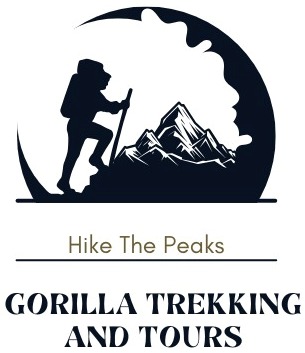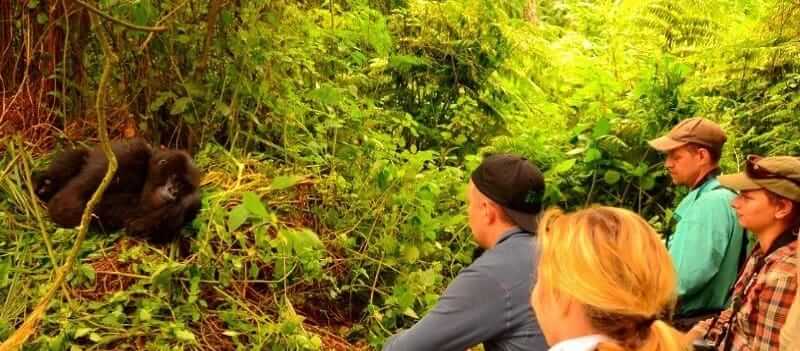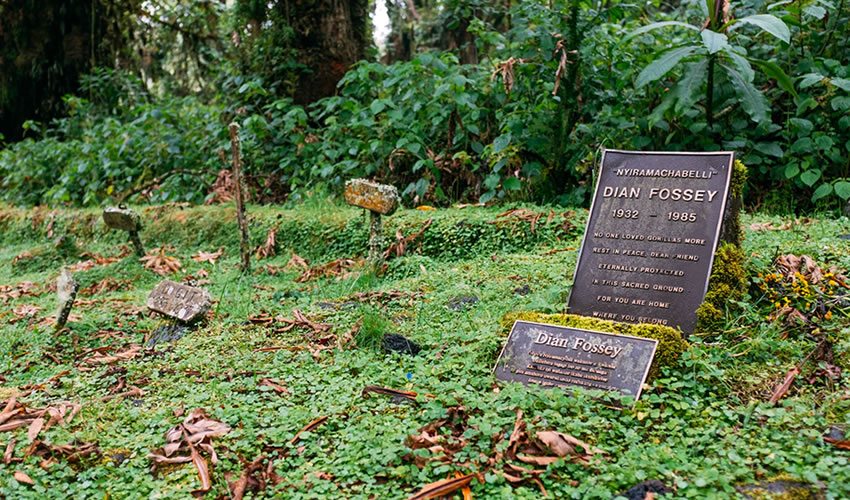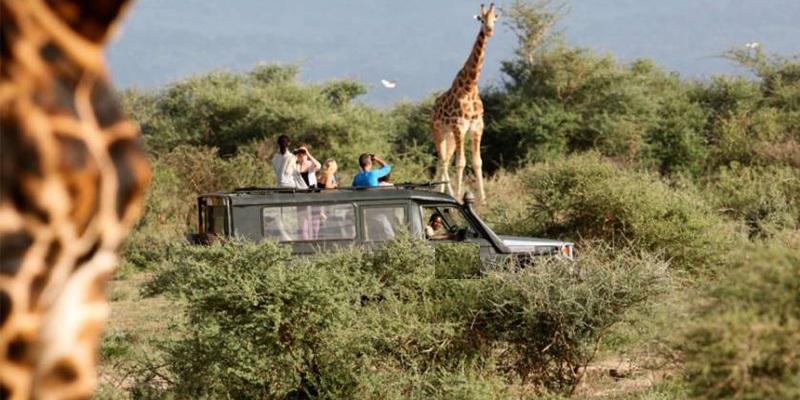Mountain Gorilla Trekking Tips
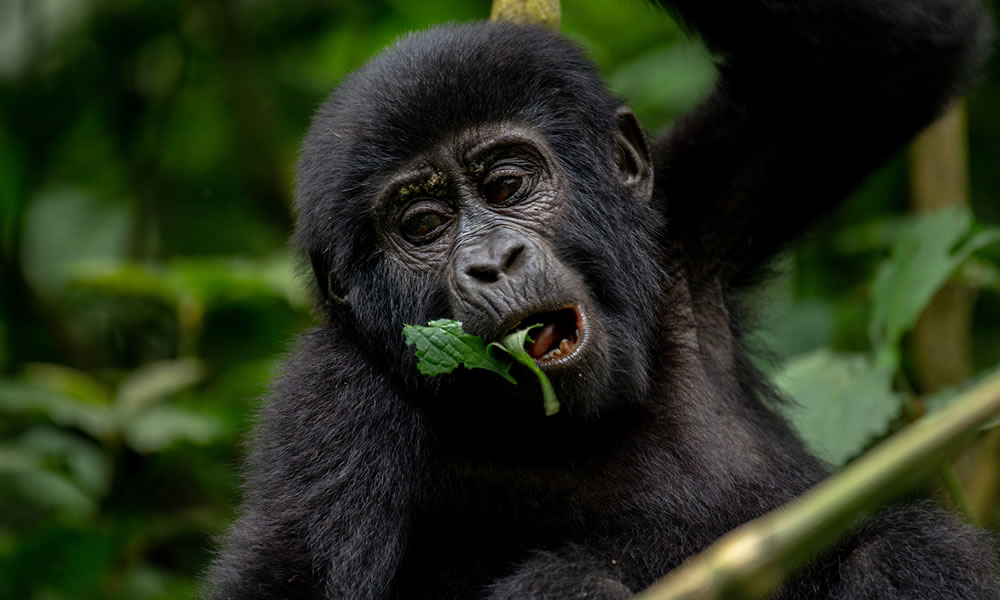
Mountain Gorilla Trekking is a tour expedition getting you to the mountains of Virunga, Volcanoes and Bwindi Impenetrable National Park in Uganda. This gorilla trekking activity takes more effort, more time and more expense than a traditional safari. These Mountain Gorilla Trekking Tips highlight everything you need to know about trekking with mountain gorillas in Rwanda and Uganda.
Where can you see mountain gorillas?
![]() There are only two populations of mountain gorillas left in the world. The first lives in the Virunga volcanic mountains of Central Africa, with groups scattered between Uganda, Rwanda and the Democratic Republic of the Congo (our tours visit Rwanda’s Volcanoes National Park and Uganda’s Bwindi Impenetrable Forest).
There are only two populations of mountain gorillas left in the world. The first lives in the Virunga volcanic mountains of Central Africa, with groups scattered between Uganda, Rwanda and the Democratic Republic of the Congo (our tours visit Rwanda’s Volcanoes National Park and Uganda’s Bwindi Impenetrable Forest).
The second population lives deep in Bwindi. As of last year, best estimates are that – in total – there are fewer than 900 mountain gorillas left in the wild. That puts them on the Critically Endangered list (two classifications away from completely Extinct).
The best Mountain Gorilla Trekking
The first thing to appreciate is that visiting mountain gorillas / Mountain Gorilla Trekking on a group tour can be quite expensive (going solo is often even more so). These animals exist in extremely remote locations, in countries not known for their tourist infrastructure, which means the logistics of a gorillas visit are a challenge in themselves. Tour groups must also pay permits for expert guides to lead them through Virunga, or Bwindi or Volcanoes National Park.
Like most game drives in Africa, the experience is completely worth it, and we’re yet to hear anyone come back from a gorilla visit underwhelmed, but it’s just something to keep in mind. It’s also worth remembering that gorilla treks in Uganda have seasonal permit pricing, which means permits cost almost half as much in March and April.
Uganda Gorilla Shortbreak
A compact 4-day itinerary from Kampala to Uganda’s Bwindi Impenetrable Forest. If you’re passing through Uganda on your own, this would make a fantastic trek add-on to a larger itinerary.
Mountain Gorillas of Rwanda
An equivalent 4-day shortbreak, this time in Rwanda’s Volcanoes National Park. This one comes with an optional ‘Gorillas in the Mist’’ trek to visit the grave of Dianne Fossey, as well as her old research station, deep in the jungle.
Gorillas & Game Parks
A more comprehensive 16-day itinerary, with an overland truck and a dedicated Intrepid leader. It combines gorilla trekking in Uganda with safaris in the Masai Mara and Queen Elizabeth National Park. One for the serious wildlife buffs.
Mountain gorilla habitat
Mountain gorillas live way up in the cloud forests, ranging from an altitude of 2200m to 4300m (a not insignificant height – you may feel a little short of breath. Remember to let your guide know if you feel a headache coming on).
The vegetation on the lower slopes will be dense, often a mix of bamboo, ferns and galium vines. As you climb, the undergrowth should thin out a bit. The zone where the gorillas live is misty, damp and (depending on the weather) can be a bit cold. Mountain gorillas move around depending on the season, spending time in the subalpine regions to feed on senecio trees during certain times of the year.
What to pack for gorilla trekking
1. Boots – Essential
A good quality pair of hiking boots from a store like Kathmandu will serve you well. They’re expensive, but so are your ankles when they break. Don’t risk it with a cheap pair of sneakers.
2. Gloves
During the trek you might be grabbing trees, branches and vines, and your hands can get a bit scratched and generally beaten up if you’re not careful. Pack a tough old pair of gardening gloves. They’ll look lame, but you’ll be glad you brought them.
3. Light rain jacket
Bwindi and Virunga are both tropical rainforests, and there’s a good chance of rain almost the year-round. Pack a light-weight poncho or rain jacket that you can roll up in your bag and bring out if necessary.
4. Energy snacks
The trek to the mountain gorillas isn’t impossible, but it is tough. Energy snacks like nuts, dried fruit, chocolate or power bars are a great idea. Just remember to take any rubbish with you as you go.
5. Water
Avoid buying plastic water bottles while you’re in Uganda or Rwanda. They’re terrible for the environment. Bring a reusable canteen (preferably with a purifying filter built in) or a pack of filtration tablets. You’ll need to drink a lot during the trek.
6. Long pants and shirts
It’s best not to expose too much skin during the jungle trek, and remember to tuck your trousers into your socks – you really don’t want safari ants crawling up there.
